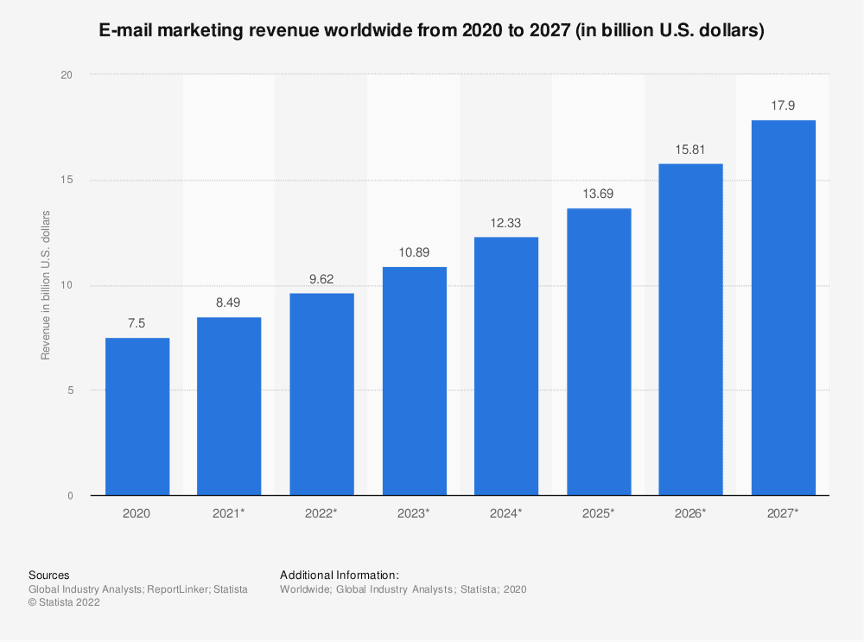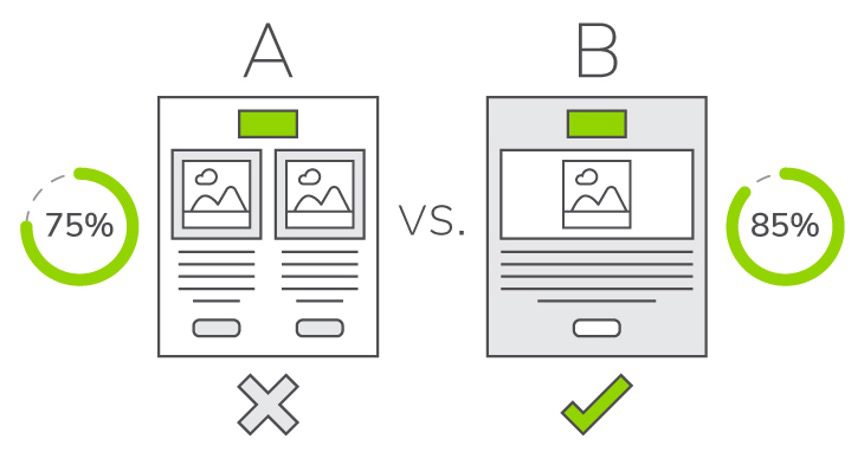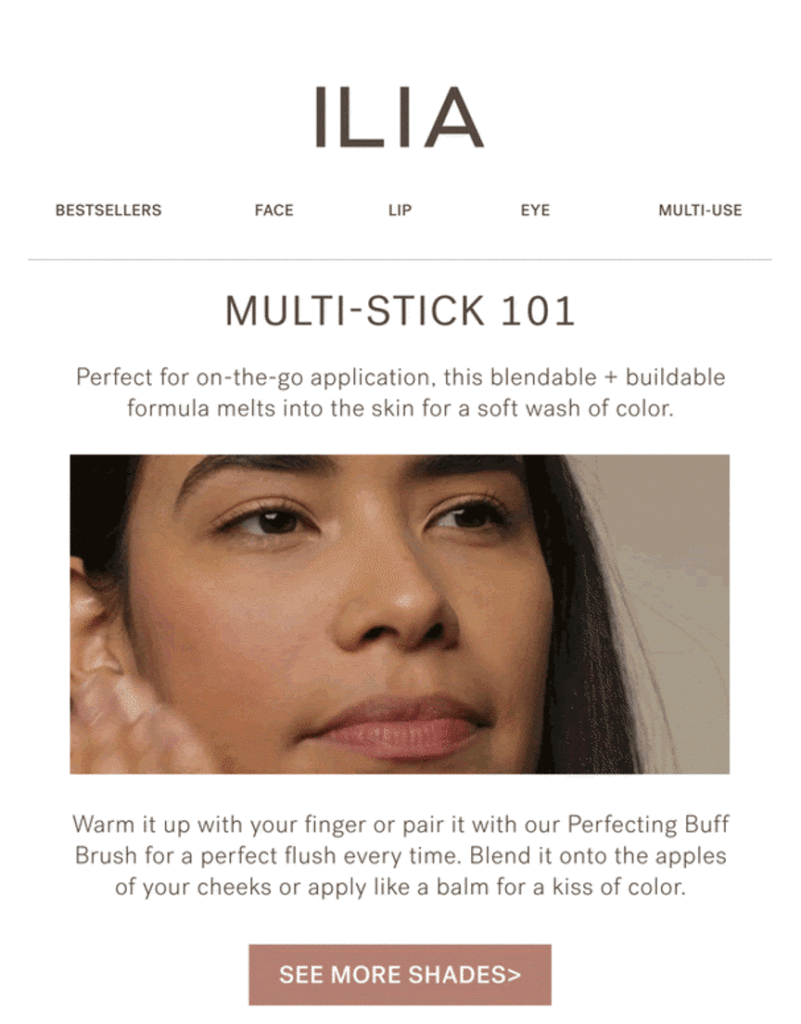Email marketing remains a powerful tool for businesses. With over 4 billion email users in 2020, as highlighted by Statista, the potential reach is vast. However, to truly stand out, marketers need to leverage high-converting email templates and adhere to email design best practices. The success of an email marketing campaign relies heavily on its design.
A well-designed email can captivate readers, engage them with your brand, and ultimately convert them into loyal customers. In today’s world of technology and digital communication, where people are bombarded with countless emails daily, it is crucial to stand out from the crowd and make a lasting impression. A visually appealing and strategically crafted email can make all the difference in grabbing the recipient’s attention and enticing them to take action.

Table of Contents
- 1 The Power of Clear Goals in Email Campaigns
- 2 Crafting the Perfect Sender Name and Subject Line
- 3 Mastering Layouts and Patterns with Email Design Templates
- 4 Personalization in Ecommerce Email Design
- 5 A/B Testing: The Backbone of High Converting Email Campaigns
- 6 Visual Elements: From Email Banners to GIFs
- 7 FAQs
The Power of Clear Goals in Email Campaigns
Before diving into the design process, it’s important to define the goals of your email campaign clearly. Ask yourself what you want to achieve with this particular campaign. Are you aiming to generate leads, increase sales, promote a new product or service, or simply engage with your audience?
By identifying the purpose and desired outcomes of your email campaign, you can tailor your design and content to align with these goals. For example, if your goal is lead generation, focus on creating an enticing call to action that encourages recipients to take the desired action.
Every email should serve a purpose. Whether it’s to inform, sell, or engage, clarity is paramount. HubSpot’s research indicates that emails with a singular, clear objective enjoy a 25% higher click-through rate. By setting a clear goal, marketers can craft content that drives action, using email campaign templates as a foundational guide.
Crafting the Perfect Sender Name and Subject Line
First impressions are crucial. A study by Campaign Monitor reveals that 68% of Americans base their decision to open an email on the sender’s name. A recognizable and trustworthy sender name can significantly boost open rates. Paired with a compelling subject line, which can enhance open rates by up to 50%, your email is poised to grab attention.
To craft compelling subject lines:
- Keep them concise: Aim for around 40-50 characters so they don’t get cut off in email previews.
- Use action words: Incorporate verbs that create a sense of urgency or excitement, such as “Discover,” “Limited Time Offer,” or “Don’t Miss Out.”
- Personalize when possible: Including the recipient’s name or referencing their previous interactions with your brand can help grab their attention.
- A/B test your subject lines: Experiment with different variations to see which ones yield higher open rates and adjust your strategy accordingly.
Remember, the subject line is the gateway to your email content. Make it intriguing enough to compel recipients to click and explore further.
Mastering Layouts and Patterns with Email Design Templates
The design of your email plays a pivotal role in guiding the reader’s journey. Email design templates offer a foundation, but understanding the principles behind them is crucial:
- Inverted Pyramid: This design starts with a captivating headline or image, narrows down with supporting content, and culminates in a focused CTA, guiding readers toward taking the desired action.
- Z-Pattern: Given that readers naturally scan content in a Z pattern, placing key elements like headlines and CTAs along this trajectory can effectively capture and guide their attention.
- F-Pattern: For content-rich emails, the F-pattern places vital information at the top, with subsidiary details following below, ensuring readers absorb the most crucial content first.

Mobile Responsiveness: A Must in Modern Email Design
With the ubiquity of mobile devices, emails must be optimized for smaller screens. A Litmus study underscores that 42% of emails are opened on mobile devices. Email design software can assist in ensuring fluid designs, scalable images, and prominent CTAs.
To optimize your emails for mobile devices:
- Use responsive design: Design your emails to automatically adjust their layout based on the device they are viewed on. This ensures your content remains easily readable and visually appealing regardless of screen size.
- Keep subject lines concise: Mobile screens have limited space, so make sure your subject lines are short and attention-grabbing.
- Use large fonts and buttons: Make sure your text is legible without zooming in and the buttons are big enough to be easily tapped with a finger.
- Test across different devices: Preview and test your emails on various mobile devices and email clients to ensure optimal display.
By optimizing your email campaigns for mobile devices, you can reach a wider audience and improve engagement with your content.
Personalization in Ecommerce Email Design
Modern consumers crave tailored experiences. Experian’s data suggests personalized emails can achieve six times higher transaction rates. But true personalization extends beyond inserting the recipient’s name. Ecommerce email design often leverages purchase history for tailored recommendations, enhancing user engagement.
Furthermore, segmenting your audience allows you to personalize content based on specific demographics or interests. For example, if you’re an e-commerce business selling both men’s and women’s clothing, sending separate emails showcasing gender-specific products can greatly enhance personalization.
A/B Testing: The Backbone of High Converting Email Campaigns
Refinement is key. By sending two versions of your email, marketers can discern which elements resonate most with the audience. High-converting email campaigns often utilize A/B testing to continually enhance their strategy, ensuring optimal engagement and conversion rates.
Here are some best practices for testing and analyzing your campaigns:
- Start with small changes: Test one element at a time to accurately measure its impact on performance.
- Define your goals: Clearly define what you want to achieve with each test, whether it’s increasing open rates, click-through rates, or conversions.
- Analyze the results: Monitor key metrics and analyze the data to identify trends and insights. Look for patterns that can help you optimize future campaigns.
- Iterate and refine: Based on your findings, make adjustments to your email campaigns and designs and repeat the testing process to improve results continually.
Remember that testing is an ongoing process. By regularly evaluating and refining your email campaigns, you can ensure they remain effective and drive high conversions.

Visual Elements: From Email Banners to GIFs
Visuals can elevate your email content. Brain Rules posits that information paired with relevant imagery is retained 65% better. Incorporate high-quality images, GIFs, or even videos to make your content more engaging and memorable. Email banners, for example, can inspire visually captivating headers, while emailer design size guidelines ensure optimal display across devices.
To create a visually appealing design, consider the following:
- Use a consistent color scheme that aligns with your brand identity.
- Choose fonts that are easy to read on different devices.
- Incorporate images or graphics that are relevant to your content.
- Utilize white space strategically to improve readability.
Remember, simplicity is key. Avoid cluttering your emails with excessive text or images, as it can overwhelm the reader and distract them from taking action. Instead, focus on delivering concise and engaging content that guides the recipient towards the desired conversion.

CTAs: The Heartbeat of Conversion
Your CTA (Call to Action) is the pinnacle of your email. It should be prominent, compelling, and clear. Best marketing email examples often have CTAs that stand out, guiding the reader toward the desired action, be it a purchase, sign-up, or feedback. A study by WordStream found that emails with a singular CTA saw a 371% increase in clicks and a staggering 1,617% rise in sales.
Whether purchasing, signing up for a newsletter, or downloading an eBook, a well-designed CTA can significantly impact your campaign’s success.
When creating your CTA, keep these tips in mind:
- Make it prominent: Ensure your CTA stands out from the rest of the email using contrasting colors or bold fonts.
- Use actionable language: Use strong verbs such as “Shop Now,” “Download,” or “Subscribe” to prompt immediate action.
- Place it strategically: Position your CTA above the fold, where it is visible without scrolling. Consider repeating it at the end of your email for added visibility.
- Create a sense of urgency: Encourage recipients to take immediate action by using words like “Limited Time Offer” or “Exclusive Deal.”
You can increase click-through rates and drive conversions by including a clear and compelling CTA in your email campaigns.
When it comes to email marketing, both design and content are paramount. Mastering the art of email design is crucial. Marketers can craft visually appealing and effective emails with tools and best practices. To elevate your strategy and achieve unparalleled success, consider partnering with experts Coalition Technologies, a leading email marketing agency, to transform your email marketing endeavors.
FAQs
What are the most important factors to consider when designing an email campaign?
When designing an email campaign, prioritize audience segmentation, deliver relevant content, use a clean visual design, incorporate clear CTAs, ensure mobile optimization, craft engaging subject lines, and time your emails effectively.
How do I get a high conversion rate in email marketing?
To achieve a high email conversion rate, segment your audience and tailor emails to their behavior, demographics, and purchase history. Make content compelling, addressing pain points while providing value. Use clear and persuasive CTAs, optimize for mobile, and regularly test and maintain list hygiene.
How do I optimize my email for conversion?
To optimize an email for conversion, personalize it, create an enticing subject line, use high-quality visuals, make the call to action clear, and avoid distractions.
What is a good conversion rate for an email campaign?
The average email conversion rate is 1-5%, but it can vary based on industry, purpose, and audience. Marketers should compare their rates with industry benchmarks and continually optimize their campaigns for better performance.
What is the email optimization process?
The email optimization process involves analyzing performance metrics, conducting A/B tests on various email elements, gathering feedback from recipients, updating content and design based on insights, and maintaining a clean subscriber list for improved deliverability and engagement.


